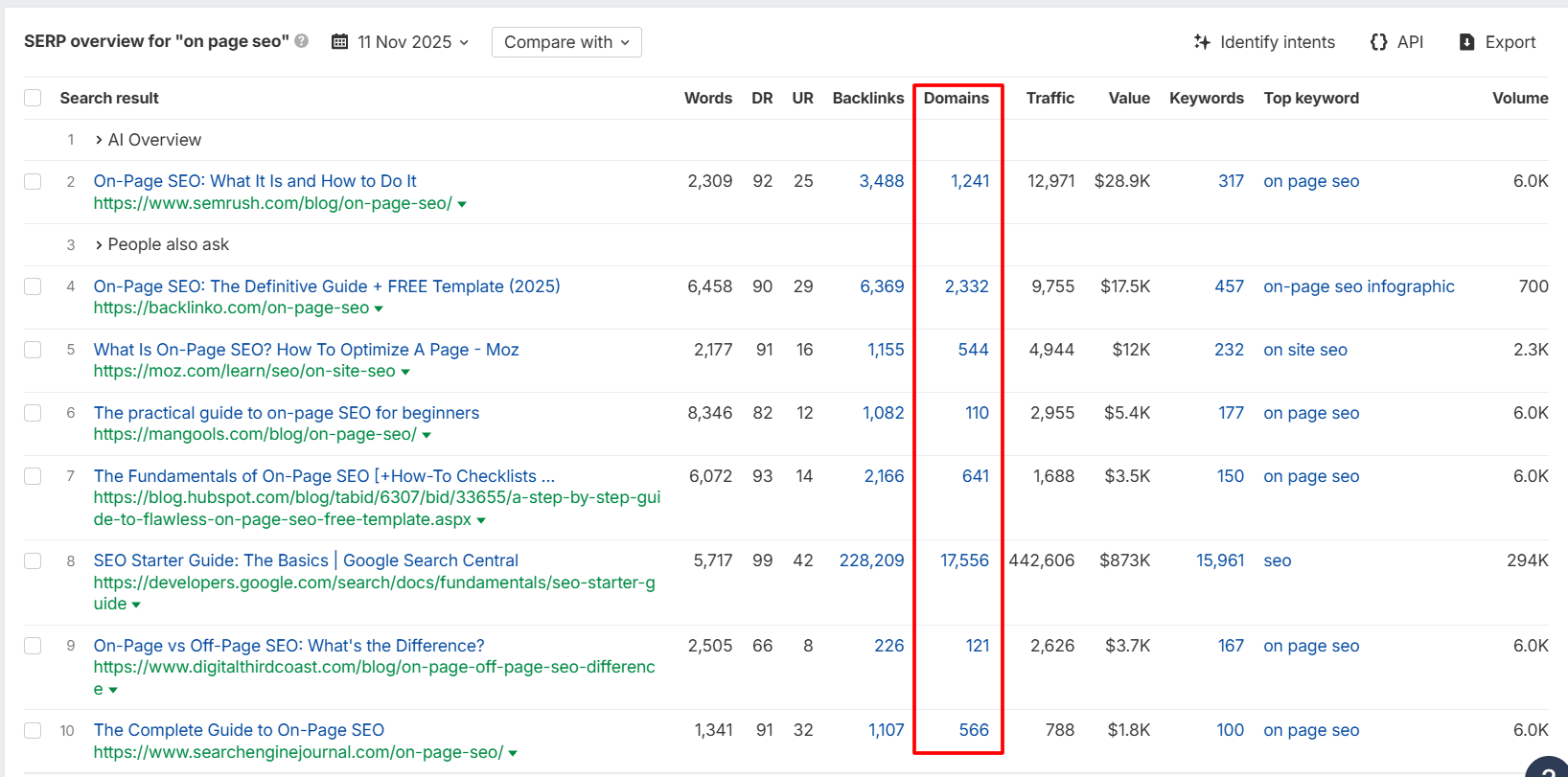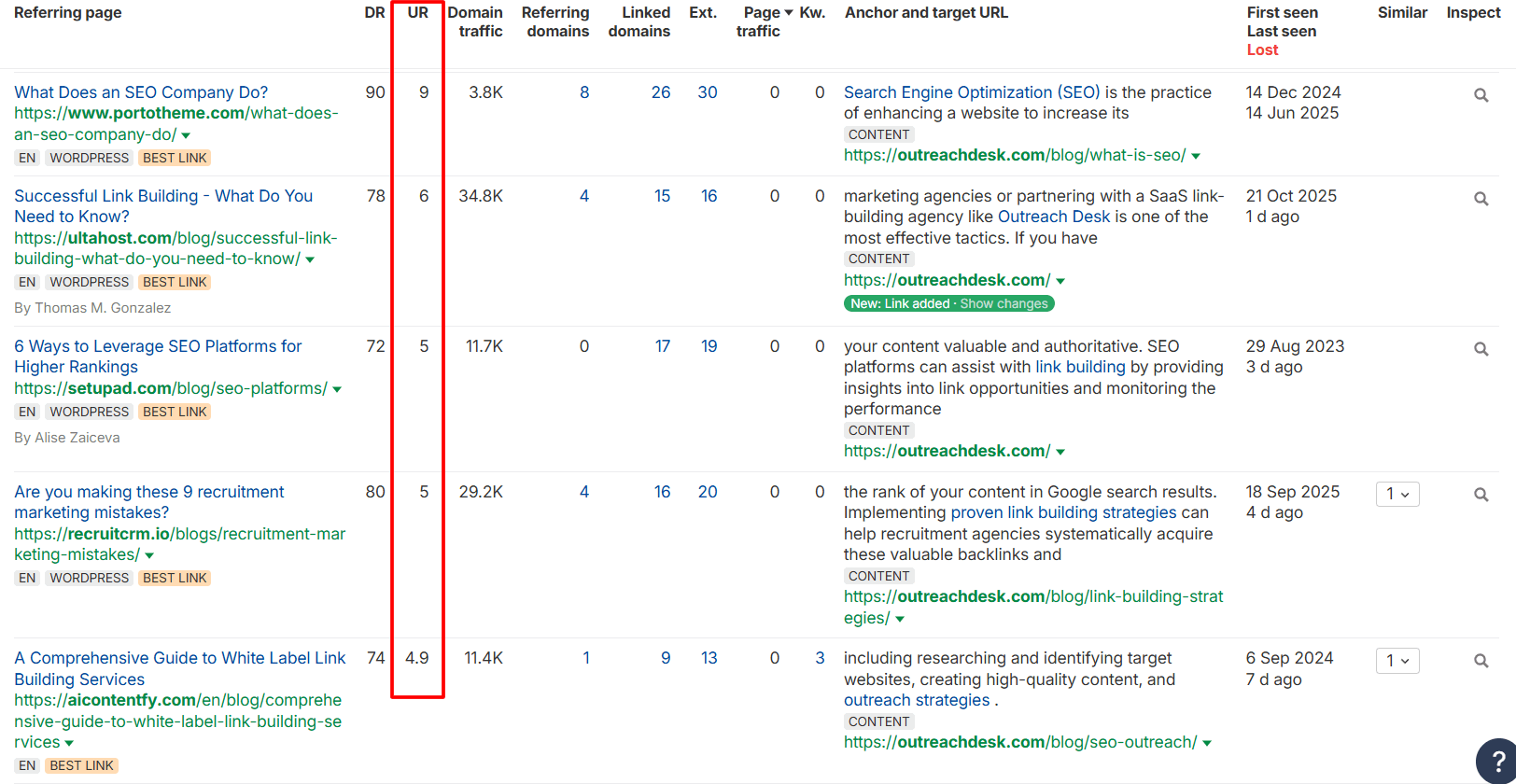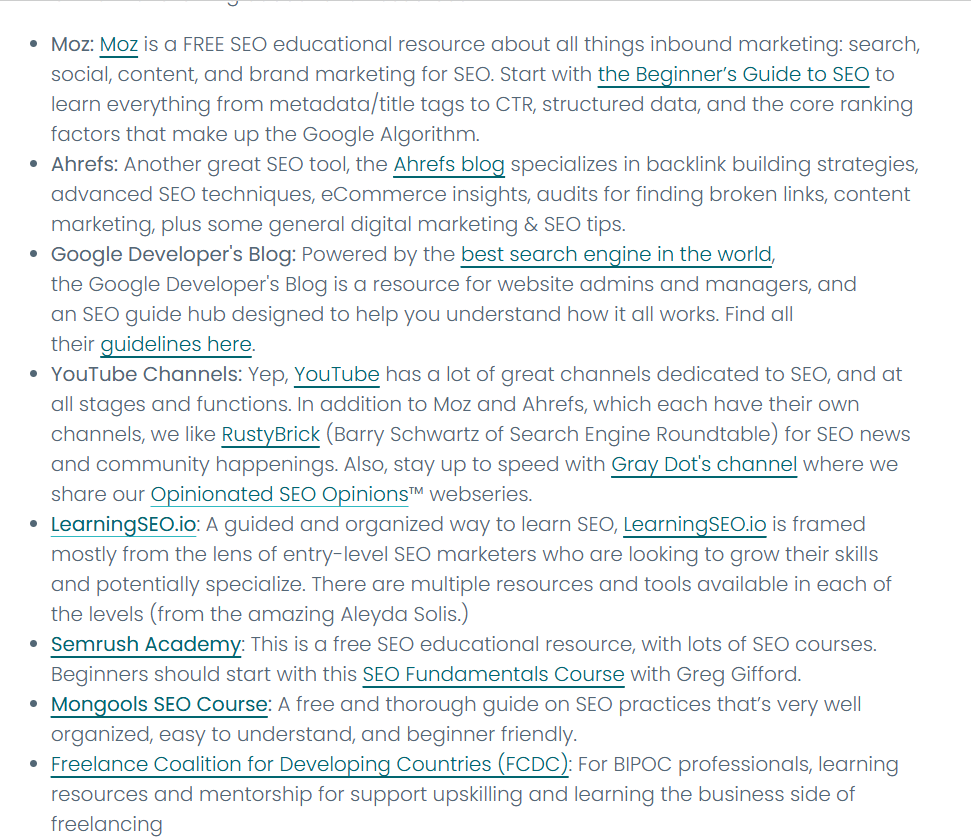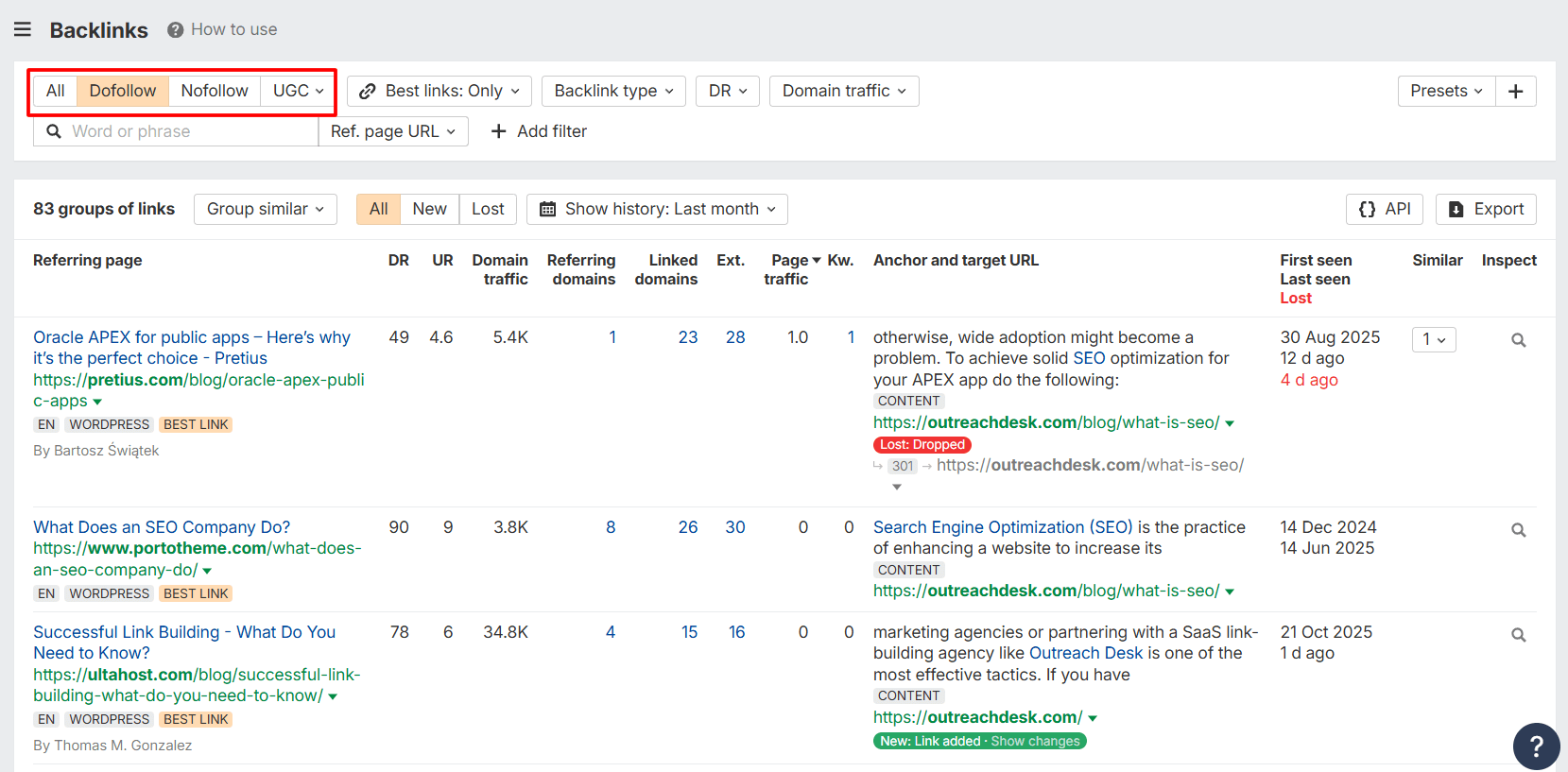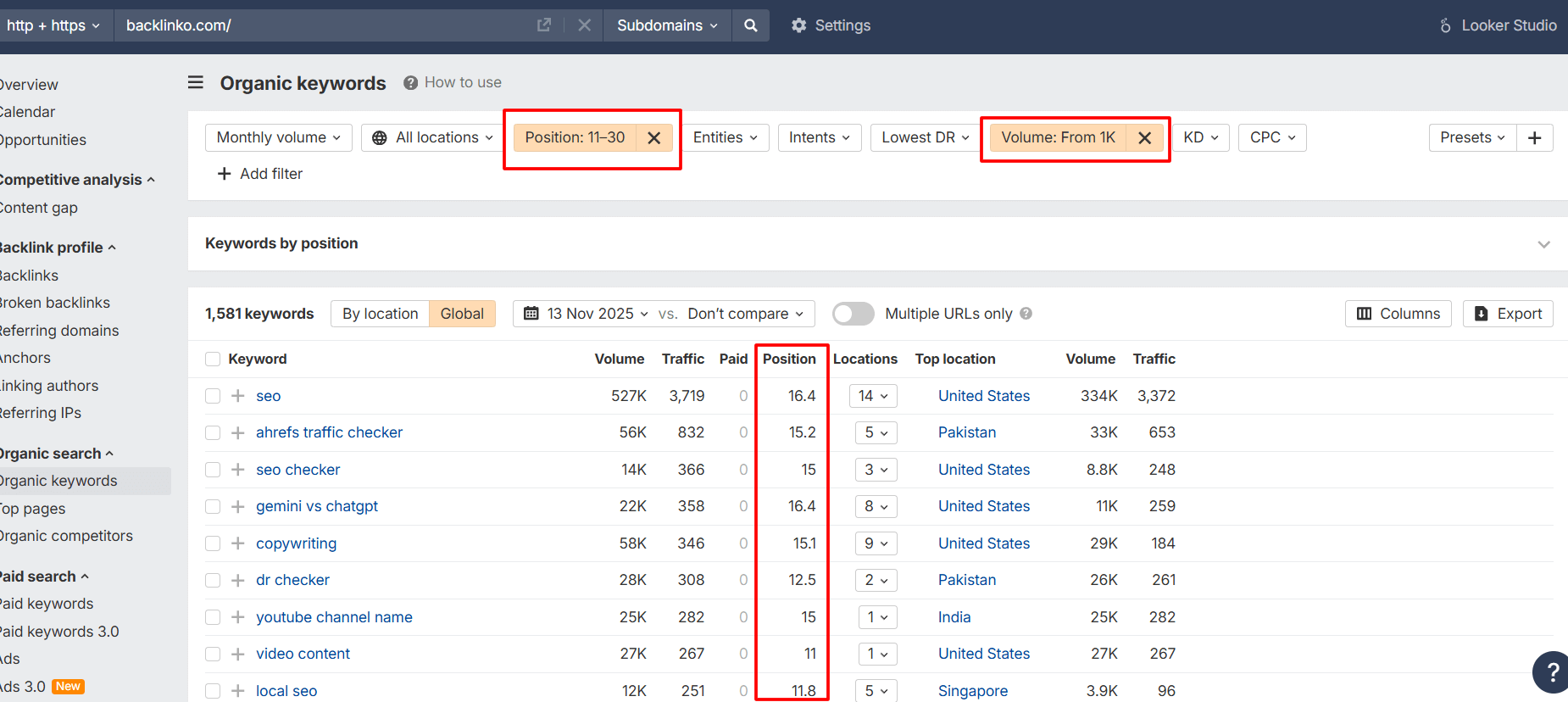High-quality links can boost your rankings, but only when the equity behind them flows correctly.
If you’re investing in link building, you need to understand how link equity helps you gain more authority, visibility, and growth from every link you earn.
This guide explains how link equity works, what affects it, and proven strategies to amplify site authority and rankings.
What is Link Equity
Link equity is also known as link juice. It refers to the value or authority (equity) passed from one page to another through hyperlinks.
When a high-quality and trusted site links to your page, it signals trustworthiness and relevance to Google.
The value passed depends on the linking page’s authority, relevance, and the link’s placement.
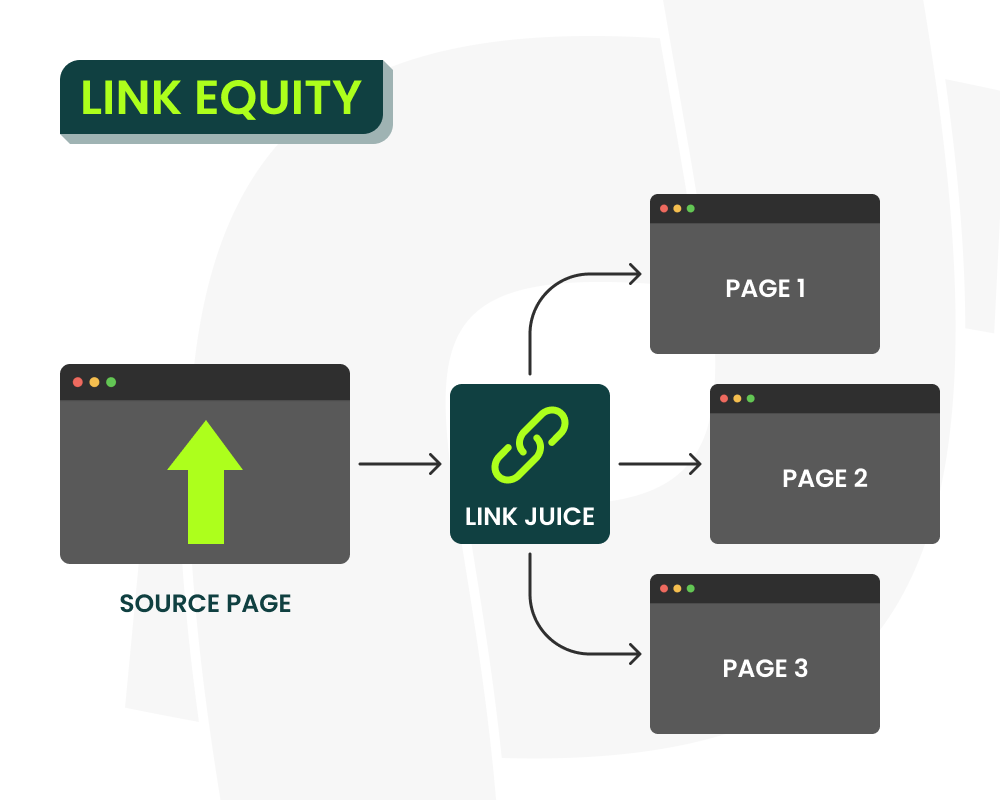
When a high-authority site links to your page, it transfers authority, helping your page rank higher in search results. These links signal trust and relevance to Google, and it’s a core factor behind stronger rankings.
In short, link equity turns backlinks into measurable gains in rankings and authority.
Why Link Equity is Important for Ranking
Links remain one of the strongest ranking signals. Here are the reasons why it plays a key role.
Keyword Ranking:
Google’s algorithm still works on link-based signals to assess page authority. It evaluates the quality, quantity, and context of the inbound links.
When a page receives or accumulates link equity, it gains greater visibility. It means that your content earns more clicks.
Crawl Prioritisation:
Search engines allocate a crawl budget that specifies the number of pages a crawler can crawl in a given period.
Also, pages with more internal and external links are considered more important in the hierarchy.
A well-structured internal link flow improves crawlability. It accelerates higher indexing of new product pages, blogs, and landing pages.
Topical Authority:
When authoritative sites reference or link to your content in a relevant context, Google interprets that as topical relevance and ranks accordingly.
When your site has authority, it drives sustainable growth.
Backlinko’s research shows that pages ranking #1 have 3.8x more backlinks than those ranking #2 – #10.
More high-quality backlinks increase your ranking potential. Additionally, you can distribute link juice across your main pages via internal links.
But remember, focus should be on acquiring high-quality backlinks, which are more important than a high volume of low-quality ones.
Here is an example of the keyword “on-page SEO,” where Backlinko has more backlinks and referring domains than Semrush, yet Semrush still ranks in the first position. So it’s proven that more backlinks don’t always guarantee a higher ranking.
How Does Link Equity Work
Link equity works by passing value through hyperlinks, but not all links carry the same weight; only links from high-authority, relevant pages carry more weight than those from low-quality sites.
Google treats each hyperlink as a signal. Each signal shows the authority of the linking page.
Additionally, factors such as the referring page’s authority, the link tag, and link placement significantly influence your pages’ authority.
What Determines Link Equity
Not all links transfer equal authority. Therefore, link value is determined from the following factors.
Domain Authority
Higher-authority domains typically pass more link equity than lower-authority domains. A backlink from a trusted, higher-authority source carries more weight.
Page Authority
The page authority of the referring page affects how much link juice is transferred. High-authority pages transfer substantially link equity than the weak ones or new pages.
You can check the page authority using seo tools like Ahrefs or Moz.
Link Relevance
Relevance plays a significant role; links from relevant pages and topics pass more value.
Here’s an example of the backlink we received from the same niche site, aicontenify.com, which appears to be much more relevant.
However, if we got a link from a diet or pet grooming blog, it wouldn’t be as practical or applicable as this one.
Link Position
Links placed in the main content will pass more value than those in the footers and sidebars.
Number of Outbound Links
The more outbound links there are, the less equity each link will receive.
A resource page with many links distributes its link juice evenly, resulting in less value per link.
Look at a real-life example: as shown in the image below, the page contains numerous links. When a page has numerous links, it diversifies the link equity.
The Link Tag
Google treats the dofollow and nofollow links differently.
Links without a rel attribute are treated as dofollow links and pass link equity. At the same time, nofollow links have the rel=”nofollow” attribute, which signals to search engine crawlers not to follow the link or pass any equity.
You can check the types of links using the tool Ahrefs.
Or you can use the Google Inspect tool, which helps users to view webpages.
Internal Linking Architecture for Link Equity
This section will help you understand the internal linking structure that maximises the distribution of link equity.
It enhances crawl efficiency and reinforces topical authority.
Here, it’s everything about hub-and-spoke models, topical siloing, and anchor text that work together to create a scalable internal ecosystem.
While backlinks attract external authority, internal linking determines how that authority is distributed within your site.
It signals to Google which pages are most important and how relevant your topic is to them.
As per the UX guideline, a strong internal architecture reduces click depth, minimising the number of clicks required to reach the desired page to just three from the homepage.
When pages are strategically built, it strengthens topical siloing, reflecting the proper layout of the content.
In short, External links earn trust, and internal links effectively distribute equity.
Hub-and-spoke for Topical Authority
The hub-and-spoke model is also known as cluster architecture. It is the best framework for internal link optimisation.
Hub Pages:
A hub page is a central and comprehensive page on a website that serves as a table of contents for a specific topic, linking to other relevant content.
Cluster Pages:
Cluster pages are supporting pages on a website that explore specific subtopics in detail and link back to the hub page that focuses on the central theme.
Pillar vs. cluster internal linking pattern:
The hub page links to all the aggregate pages, and the cluster page, in turn, links back to the main pillar page, creating a “hub and spoke” model.
Bonus Step: Create Content Clusters
Cluster pages are supporting pages on a website that explore specific subtopics in detail and link back to their pillar pages (central and comprehensive pages).
Pillar pages link to all their cluster pages; in turn, they link back to the main pillar page, creating a “hub and spoke” model.
Tiered Link Architecture and Priority Weighting
Not all pages receive equal internal link equity. Some pages deserve greater priority based on their content and value.
Tier – 1: The Foundation, the core hubs
- It is directly accessible from the homepage or the navigation bar.
- It receives the highest link frequency.
- Example – services pages, product categories, and pillar guides.
Tier – 2: The Supporter, cluster pages, and content
- You should always link back to the parent hub and at least one sibling cluster for better balance.
- The priority given to this tier is lower than that of tier 1.
Tier – 3: The Amplifiers, utility, or long-tail pages
- This includes FAQ’s, glossary sections, and secondary blogs that add depth but are not primary ranking drivers.
- These still receive equity but at a lower link frequency.
Anchor Text Strategy
Anchor text is one of the strongest contextual signals in internal linking.
However, it must be used strategically to avoid over-optimisation.
- Use natural phasing and semantic variations.
- Example: use “learn about ethical link-building” instead of the exact-match anchor text “white hat link building strategies”.
- Frequently using the exact keyword-rich anchor text for dozens of pages can seem manipulative and dilute its effectiveness.
- Instead, balance it with branded, partial match, or generic anchors.
A well-balanced anchor text strategy reinforces semantic signals and distributes link equity effectively by enhancing your content hierarchy.
At the Outreach Desk, we ensure every client earns not just backlinks but also that every bit of authority flows along the path to success. Our internal linking audits turn structure into SEO growth.
Internal Link Strategy to Pass Higher Link Juice:
Internal links act as a pipeline for flowing the link equity. It signals to Google which pages are most important and how relevant your topic is to them.
In short, External links earn trust, and internal links effectively distribute equity.
Step 1: Identify the High-link Juice Pages
First, find out which pages on your website are most linked to.
Utilise SEO tools to identify which pages have the most backlinks. These pages will have more link equity.
Then filter by authority to pick the best pages.
Step 2: Find Your Most Important Pages
Now, we need to identify the most important pages on our site.
Here, there will be two kinds of pages:
The first are business pages, which can drive sales or lead conversions.
Those pages could be product or service pages on your site.
The second are potential ranking keywords.
Potential keywords are those that currently rank in positions 11-30 but could rank higher with a slight boost in link equity.
Use tools like Ahrefs to identify keywords that are close to ranking on the first page and have good search volume.
Step 3: Add Internal Links to Those Pages
Add the contextual links from your high-equity pages to the target pages.
Ensure that the links that are placed appear naturally within the relevant content. Avoid inserting them forcefully within the irrelevant texts.
You can also modify the existing content and naturally add links; however, remember to link only to relevant topics.
How to Improve Link Juice (Link Equity)
Your site’s link equity depends on the quality and quantity of the backlinks your page earns. To increase equity flow, focus on building high-authority, relevant backlinks using ethical methods.
Here are the three best link-building methods to improve link equity.
Digital PR
Digital PR helps you earn backlinks from high-authority publications and news sites. By sharing unique insights, studies, and success stories, your brand will attract more editorial links that attract authority and trust.
Additionally, Google highly values these editorial links; implementing this strategy will directly enhance domain authority and improve ranking potential.
Guest Posting
Guest posting is an effective way to earn contextual backlinks. You can pitch to high-authority relevant websites in your niche and create valuable content that naturally attracts links.
Ensure that your link fits naturally in the content. Avoid spammy or irrelevant sites, as quality links can drive both referral traffic and link equity.
Create Linkable Assets
You can create resources like guides, research, infographics, and tools that naturally attract links.
When your content stands out as an authoritative and trusted reference, other sites will want to link to it more frequently, enhancing your link equity.
Measuring the Impact of Link Equity
The real advantage lies in measuring how link equity translates into organic traffic. Link signals influence ranking authority and crawl personalization.
It helps to validate your SEO decisions and optimize your internal and external linking strategies. Effective measures between equity links and vanity URLs.
It ensures that outreach and content placement drive measurable outcomes by boosting organic traffic, maintaining stable rankings, and optimizing crawl efficiency.
Key Metrics to Track
These metrics help identify how much link equity your site gains and distributes. It monitors organic performance, technical crawl data, and link profile health check.
Organic Traffic:
- Use Google Search Console to track organic clicks and the impressions of the targeted pages before and after the link placement.
- A stable increase often indicates growth in ranking and signals improving visibility.
- Compare the pages with and without the new backlinks to determine the links’ influence.
Keyword Ranking:
- Track the rankings for specific pages where link equity was emitted.
- Analyze average gains and reduced rankings; they are signs of strong authority.
At the outreach desk, we use the Ahrefs tool to compare keyword performance over 4 to 8 weeks.
Crawl Frequency:
- In Google Search Console, view crawl stats to see how often the Googlebot visits your pages.
- A high crawl frequency indicates greater importance in your website’s link graph.
- Moreover, the pages that receive fresh internal or external links are crawled and indexed more effectively.
Internal Linking Counts:
- You should review the number and placement of internal links that point to the critical pages.
- Use Screaming Frog to generate a link map and ensure that link equity flows logically to key revenue and topic pages.
Referral Traffic:
- Backlinks deliver direct referral visitors.
- Use GA4 to filter traffic by source and medium to identify which backlinks drive the most referral traffic.
Internal Link Impact Testing:
You can use an A/B test for internal links, just as you would for on-page elements.
Pick a Content Cluster:
Select a topic cluster where you believe the internal links cloud can improve its performance. E.g., blog or category page.
Make Controlled Changes:
- Add links that align with the context and link to high-authority pages.
- Adjust the anchor text so it is clearly visible and aligns with your niche and topic.
- For more contextual balance, arrange the key pages closer to the homepage.
Track Time:
Measure CTR, rankings from SERPS, and crawls frequently over weeks.
We implemented internal linking for a SaaS client’s blog, resulting in a 28% increase in crawl frequency and a 15% increase in keyword counts within six months.
Authority Flow Visualization
Visualization helps reveal the hidden patterns in your site that metrics alone cannot identify.
- Use tools like Ahrefs, Screaming Frog, or custom graph tools to map the internal and external link network.
- There are high-authority pages passing equity to other pages.
- Pages with few inbound and outbound links often mark the end of the equity flow; therefore, they should be included in internal linking plans.
- Identify pages that attract numerous links but fail to distribute them effectively.
The outreach desk identified a bottleneck on a client’s high-authority resource page that attracted dozens of backlinks but failed to pass equity to key product pages after the reconstruction of internal links; those product pages saw a 20% lift in organic visibility over the course of a month.
Wrapping Up: Link Equity
Link equity is a crucial ranking factor that relies on authority, relevance, and internal linking. When done right, it boosts your site’s rankings.
Effective link equity management transforms broken authority into more focused, measurable SEO growth by fixing internal links and backlinks, where every link adds maximum value.
We specialise in enhancing your link equity through ethical white-hat link building and effective internal linking, helping you rank higher and increase your revenue.
Want to see how much authority your site is leaving on the table?
Get a free 30-minute Link Equity Audit and see how we can strengthen your rankings with clean, authoritative links.

